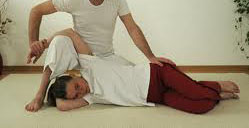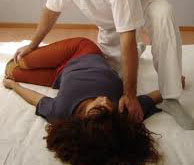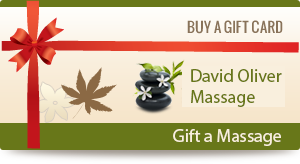What is Shiatsu?

|
Shiatsu is a form of therapeutic bodywork from Japan. It uses kneading, pressing, soothing, tapping, and stretching techniques and is performed without oils through light, comfortable clothing. Shiatsu uses natural body weight to apply pressure to the body’s meridians with assisted stretching techniques. It stimulates circulation, removing deep seated tensions from the muscles.
It is similar to acupuncture, except that the hands are used to apply pressure to the specific points rather than needles, producing similar therapeutic results. The acu-points are located on specific energetic pathways, or meridians. The practitioner uses fingers, thumbs, palms, and elbows to access the acu-points and stimulate energy flow, to tonify deficiency of energy, and to disperse any excess.
Disease Prevention
Shiatsu practitioners are trained to find areas in the body that are imbalanced, and manipulate or apply pressure to the spots to restore a healthy balance. Shiatsu massage strengthens the immune systems and increases blood and lymph circulation, which can help prevent illnesses.
How can Shiatsu benefit your health and well-being?

|
Shiatsu is a non-invasive therapy that may help reduce stress and contribute to overall well-being. It has both preventative and remedial effects.
Shiatsu can be used in the treatment of a wide range of internal, musculoskeletal, and emotional conditions. It is thought to reduce muscle stiffness, stimulate the skin, aid digestion, and influence the nervous system. Shiatsu is used to treat a wide range of chronic conditions, such as headaches, PMS, digestive disorders, fatigue, insomnia, fibromyalgia, stress, anxiety, and muskuloskeletal pain, including low back, neck, and joint pain.
Gentle pressure applied to the points of tension allow clients to relax and release negative thoughts and feelings that often cause stress. The manipulation techniques employed by shiatsu massage therapists can relieve tight muscles and stretch tense ligaments. The effect may be stimulating and invigorating or calming and sedative, depending on the goal of the session.
What are the principles of Shiatsu?
One of the fundamental concepts of Chinese/Japanese medicine is Qi (pronounced “chee”). This is the vital energy in our body that underlies all functioning.
Shiatsu massage follows many of the same tenets as acupuncture, and aims to find various meridian points in the body to provide stress relief by applying pressure, instead of needles, to those points. Qi flows in specific pathways called meridians. The Shiatsu therapist accesses the Qi through points along the meridians called Vital Points. Health is present when there is abundant Qi in the meridians and the flow is unobstructed. When the Qi becomes deficient or out of balance, or the flow is obstructed, symptoms arise. Seemingly minor signs emerge, such as regular colds and flus, weekly or daily headaches, body aches and muscular pain, or digestive difficulties. These are indications of the imbalance of Qi. Shiatsu stimulates and harmonizes the flow of Qi throughout the body.
The Shiatsu therapist is trained to recognise patterns of disharmony in the body, even prior to physical signs appearing. Simple yet subtle changes are indications of an imbalance that, left alone, may progress to a point where symptoms appear. Balance can be restored with proper assessment and regular Shiatsu sessions. Shiatsu practitioners may also offer lifestyle and activity recommendations.
What happens in a Shiatsu session?
At the beginning of the session, the practitioner evaluates the client to determine the patterns of imbalance that may be present. It is important to assess the “state of the Qi” in order for the practitioner to give the client the most effective therapeutic session. Then the practitioner designs a plan that will give the client the most therapeutic benefit according to their individual needs.
Shiatsu uses a variety of manual techniques, including pressure, kneading, soothing, tapping, and stretching to access the vital Qi of the body. In the case where the client’s energy is low or deficient, the practitioner uses specific techniques to enhance and vitalize the Qi. When the client is over-stressed, wound-up, or anxious, the practitioner employs techniques to disperse the “excess” energy. In this way, the Qi is regulated. Shiatsu works to alleviate conditions, restore balance, and promote health.
A regular maintenance program of Shiatsu is an excellent way to maintain wellness and improve vitality. This schedule will vary for each person. One Shiatsu session per month may work well to maintain balance for some. But for others, a high-stress job, family demands, an overactive lifestyle, lack of exercise, or other factors may require Shiatsu sessions on a more regular basis.
Benefits of Shiatsu Therapy
• Revitalizes the skin
• Relaxes the muscles
• Strengthens skeletal system
• Facilitates neural functions
• Regulates the digestive system
• Stimulates circulation – enhancing the body’s natural healing ability
• Controls the endocrine system – regulates hormonal balance and normalize organ functions
• Stimulates the metabolism – an effective part of weight management.
Above all, shiatsu can help your overall Health and Wellness!
Book a Massage Online

to Top
